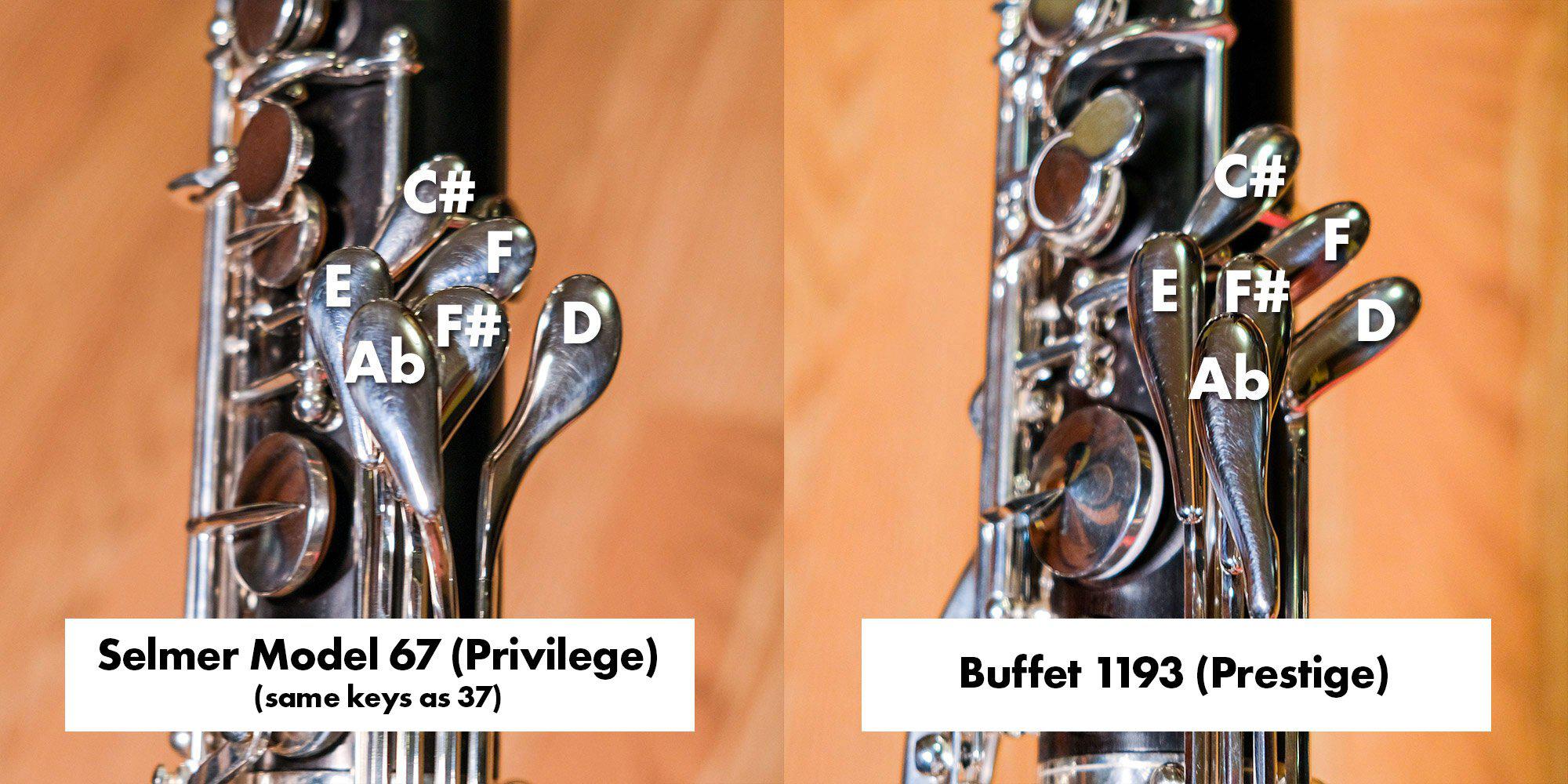
Selmer's secret bass clarinet neck experiment in the early-2000s, revealed.
Share
Finally, someone noticed, and asked the question. Now, the secret is out.
Quick setup — I got an email from Norbert in Germany asking about why his bass clarinet plays so flat:
Very recently I fell in love with a used Privilege CP25/II to low C. [Ed: This is also known as the Selmer Model 37]
This instrument was built in 2011, played by a professional player and received a yearly service from the wood wind specialist I bought it from. It is as well kept as it gets. Now to the surprising part. With the stock neck closed angle the intonation is rather low. It must be fully warmed up to play in tune at 442 Hz with the neck slide closed, and even then I can't barely make it.
I would have expected the neck slide to be pulled out slightly once fully warmed. Having had a chance to play an open angle neck recently on the instrument, it was different. Fully warm I had to pull the slide slightly to be in tune leaving a bit room for tuning in both directions. I wonder how the two Selmer necks would show such different intonation? I
contacted the Selmer service if there had been a redesign of the neck since 2011 that might explain the discrepancy. All I got back was a very general response that it would be difficult to judge without the instrument for inspection. So I am left a bit puzzled.
Norbert, you discovered one of Selmer’s experiments. Now let me give you a quick history lesson (which has nothing to do with necks, initially), and then answer your specific question.
Follow me into Bass Clarinet design history-driven-by-market-share-factors.
In the mid-1990s, Selmer was actively experimenting with their Bass Clarinet design.
From the late 1970s through the early- to mid-1990s, Selmer was producing what is known as the Model 33 Low C Bass Clarinet (the Model 31 was the Low Eb version). This bass clarinet was a big step up from the previous models they produced in terms of ergonomics and intonation. And it was hugely popular.
Starting in the 1980s, Buffet, who had previously not paid a huge amount of attention to the Bass Clarinet market, started to actively push their Model 1193 (a.k.a. Prestige) bass clarinets, and they focused directly on the orchestral doubler market: people who are primarily Bb/A clarinetists, who are called upon to play Bass Clarinet often enough that they decided to own one. This started to eat into Selmer’s market dominance.
Buffet did an interesting thing when they designed their bass clarinet: these new instruments had a different low fingering system than the Selmer Model 33 — every low note below Low E was fingered differently from the Selmer. This caused a problem for Selmer: people who “learned” low fingerings on the Buffet could not transfer that knowledge to the Selmer instrument, which kept those folks loyal to the Buffet brand, whether they liked the Selmer or not. Selmer was getting blocked out of the market by their design.
So, Selmer decided to change their low fingering system to match Buffet’s system.
But this wasn’t the only change they made. Bwahahahahaaaaa.
Starting with the Model 37 bass clarinet, Selmer completely redesigned the instrument. Keys were no longer concave, there were a LOT more adjustment screws on the low joint (previously, instrument techs had to bend metal to get low keys into adjustment properly, which frustrated some of them enough to refuse to even work on Selmer bass clarinets! I had this experience personally when a-famous-technician-who-will-remain-unnamed said to me “Don’t bring a bass clarinet to me until stop d*cking around with Selmers” — needless to say, I found another tech).
They also changed all of the low note fingerings to fall in line with what had become the “standard system” all pro bass clarinets have followed since… more or less.

During this time, Selmer also redesigned the ergonomics of the bass clarinet low keys to make it easier for people to “find” them when moving to bass clarinet from the Bb. This is still a common issue for many people when they’re learning the bass clarinet — the right- and left-hand stacks are something to get used to, because they have at least 50% more keys to contend with. Ergonomics are another issue, especially with smaller hands; some of the Buffet keys are harder to stretch to, and the mechanism itself harder to press down—Selmer keys (to some, including me) are easier to “find,” and are much easier to press down, because of how the keys are designed (Selmer=short rods vs. Buffet=long rods).
Another change Selmer experimented with was their neck, which is where I get to your question.
Norbert, you’ve discovered an “easter egg” within Selmer that is not public knowledge: Selmer experimented making A440 necks and A442 necks. Selmer made them for the different “pitch markets" — A440 necks went primarily to the US, where orchestras tune to A440. A442 necks went everywhere else.
So y’all know, Selmer has since moved to a “combo neck” where, when the neck is pushed in the whole way, it tunes ~A444 and when pulled out, is ~A438. There is no way to see the difference between a “multi-market” neck and a “set-pitch” neck unless you look side by side: the “set-pitch” necks have a shorter tuning slide, since the adjustment range wasn’t intended to be as large. But, when looking at the two set-pitch necks side by side, it’s impossible to see the difference visually without a really good ruler. They are about 3mm different in length, spread out across the neck.
So, it sounds like you got an American neck, simple as that. You can always purchase an after-market neck like the Blashaus (shameless plug: I sell them).
File this under: Selmer X-Files. And good luck!

